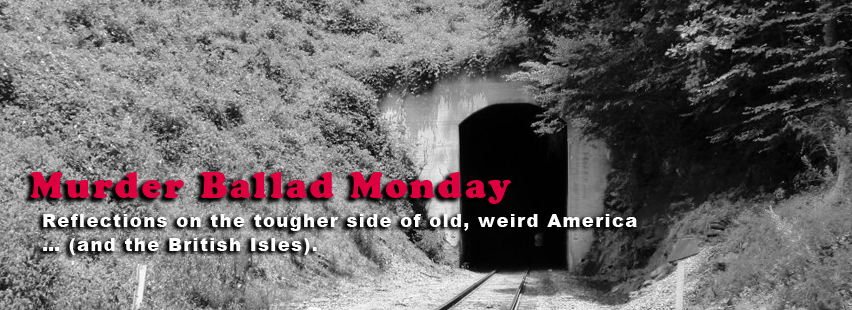“Still Growing” / “The Trees They Do Grow High”
<<<Back to page 1
While Burns clearly gave rise to a branch of the song in Scotland, it is just as obviously not the same that Flanders found in New England. If death sings in “Lady Mary Ann,” its voice is deeply muted. Consider the last verse.
The simmer is gane when the leaves they were green,
And the days are awa’ that we hae seen,
But far better days I trust will come again;
For my bonie laddie’s young, but he’s growin’ yet.
The “bonie laddie” in that last verse could, perhaps, be the couple’s infant son. The father might be gone, like the summer and its green leaves. Better days are gone too, for now. Will they come again as their son grows up? It’s a plausible reading, but far from plain.
On the other hand, the broadsides linked above demonstrate crystal, if sparse, lyric clarity. Regarding the young husband, “Cruel death put an end to his growing.” His child figures in as well, explicitly as the mother’s future. Indeed, Lizzie Higgins recorded a Scottish variant called “The College Boy” with such an ending in 1969. It seems, then, that the version performed by Eriksen grows on this branch, separate from that pruned and nourished by Burns. This branch that makes death sound loudly seems older, and is certainly more widespread.
Waltz and Engle’s Traditional Ballad Index includes a lengthy historical exploration on its page for this song. It includes speculation that the ballad may derive from a historical event of the early 17th century, the marriage of the young Lord Craigton to an older woman, and the lord’s subsequent death three years later. On the other hand, such things as child marriage and blue ribbons for betrothal were common in earlier times and, so, there is speculation the song is older still. Ian Pittaway explores the song in such a manner for his blog Early Music Muse.
Insofar as it’s already been done, and my aim is different anyway, a speculative timeline of provenance doesn’t much matter for this post. We know it’s old. If it was the history that helped the song persist, then something more of it would likely be obvious in the lyrics. Waltz and Engle’s research shows that people collected this song under a multitude of titles throughout Britain, Ireland, Australia, and much of eastern North America. Very few identify a specific place, or a person even by first name.
The conclusion is obvious then, but it bears saying. There’s just got to be more going on here than “Oh that poor Lord Craigton and his lady in 1634.”
We need to follow a different path of discovery if we really want to know why my Spotify playlist for this one includes over 100 tracks! n.b. – If you’re interested in a more organized and annotated discography, Mainly Norfolk can accommodate.
“… Father, you’ve done to me great wrong…”
You won’t have to browse that playlist much to realize that something like half of the songs on it go by the title “The Trees They Do Grow High.” Listen a bit and you’ll hear that several others with different titles nevertheless use the same or a similar phrase as their first line. It is common in traditional performances, including the earliest recording of the ballad I could find. Though the sound quality of the 1907 wax cylinder is rough, we can hear today the singing of David Penfold, landlord of the Plough Inn at Rusper, West Sussex.
As you can also tell from my playlist, we hear this “Trees…” version often in modern recordings, from the Folk Revival to the present day. Here is a melancholy Joan Baez, on her 1961 hit album Joan Baez, Vol 2.
Lyrics “The Trees They Do Grow High” by Joan Baez
Though there is variation, her first verse is a good example of how these versions start. Whatever their precise wording, the imagery evokes growth in nature, a young woman’s loneliness, and her impatience as the object of her attention and affection daily approaches manhood.
The trees they grow high, the leaves they do grow green
Many is the time my true love I’ve seen
Many an hour I have watched him all alone
He’s young, but he’s daily growing
The rest of Baez’s lyrics match up pretty well to our first example above. This is true, much more rather than less, of all others in this “Trees…” sub-group.


